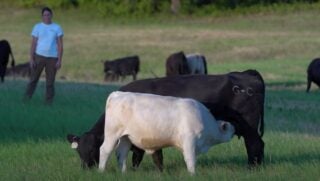New research in Illinois highlights how key changes could improve an innovative program that aids farmers in installing wetlands on their property to help clear up rivers and streams.
Since 2000, Illinois farmers have worked with The Nature Conservancy researchers and their partners in the Mackinaw River watershed of central Illinois to implement conservation practices. More recently, this has included small tile-treatment wetlands along the edges of fields to reduce the amount of nutrients that flow downstream.
During a five-year study focused on nutrient reduction efficiencies of constructed wetlands, the TNC team observed that financial resources to convert small acreages of highly productive lands of central Illinois into wetlands was one major obstacle to accelerating the implementation of these tile-treatment wetlands.
“It’s essential to expand the rate and scale of these conservation practices,” said Maria Lemke, director of conservation science at TNC and lead researcher. “Despite their proven effectiveness at reducing nutrient export to rivers and streams, wetlands can be difficult to implement on private lands given they provide downstream conservation benefits rather than direct on-farm economic benefits.”
The report discusses additional challenges to increasing constructed wetlands in agricultural landscapes — such as resource capacity, wetland siting and unexpected construction costs — and how the research team worked with agricultural partners to address such challenges. Together, these teams designed and constructed 10 new wetlands and monitored the effectiveness for eight of those wetlands during the five-year study.
An overview of the results will be published in a chapter of the upcoming 75th edition of the Journal of Soil and Water Conservation, followed by several additional peer-reviewed articles on wetland effectiveness and efficiencies. The chapter also spotlights the key players in these conservation practices, the farmers and landowners.
“A critical piece to getting agricultural conservation practices on the ground is understanding the perspectives that farmers and landowners would have towards installing certain conservation practices on their land,” said Krista Kirkham, aquatic ecologist with TNC. “Although the landowners receive annual payments for these wetlands under USDA programs, it’s downstream communities that see the water quality benefits. Farmers want to do the right thing for the land and waters on which they farm, but also for their bottom line; sometimes there’s a lack of resources to do this efficiently and/or financially.”
The team’s work supports the long-term goals to reduce 45 percent of nitrogen and phosphorus loadings from Illinois, as documented in the 2015 Illinois Nutrient Loss Reduction Strategy, but reaching this goal will require increasing the pace and scale of these innovative edge of field practices.


